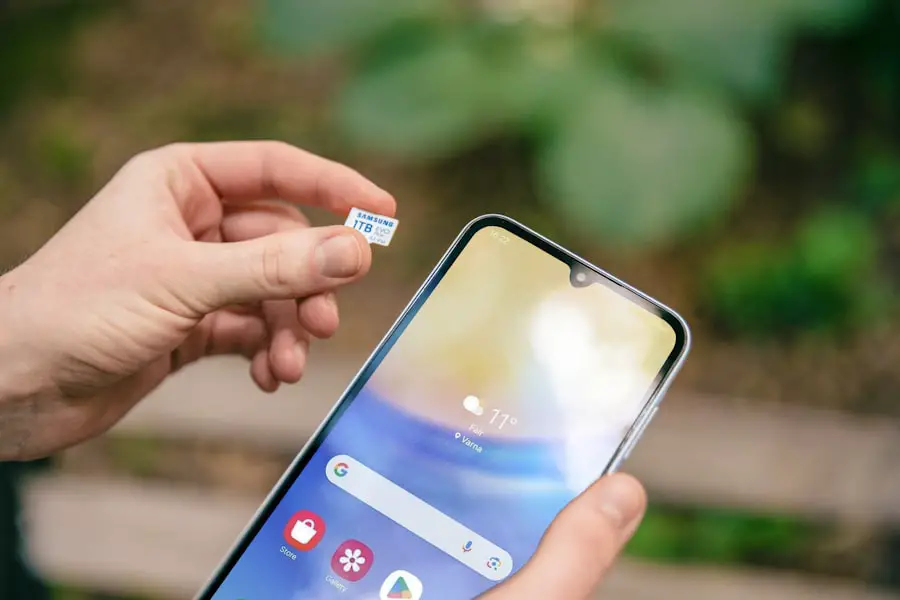In the digital age, the storage capacity of smartphones has become a pivotal factor in user experience. The iPhone, a flagship product of Apple, has consistently evolved to meet the growing demands of its users. With each new iteration, Apple has introduced various storage options, allowing consumers to choose a model that best fits their lifestyle and usage patterns.
Among these options, the 128 GB variant has emerged as a popular choice for many users, striking a balance between affordability and ample space for apps, photos, videos, and other data. Understanding the intricacies of iPhone storage is essential for making informed decisions. Storage capacity directly influences how much content you can keep on your device, from high-resolution images to extensive app libraries.
As mobile technology advances, the need for more storage has become increasingly apparent, especially with the rise of high-definition media and resource-intensive applications. This article delves into the nuances of iPhone storage, particularly focusing on the 128 GB option, exploring its benefits, limitations, and management strategies.
Key Takeaways
- iPhone storage is an important factor to consider when purchasing a new device, as it determines how much data, apps, and media you can store on your phone.
- Understanding your storage needs is crucial in determining the right amount of storage for your iPhone, taking into account your usage habits and the types of files you typically store.
- The benefits of 128 GB storage include ample space for photos, videos, apps, and games, without the need to constantly manage and delete files to free up space.
- However, the limitations of 128 GB storage may become apparent for users with extensive media libraries or those who frequently download large files, leading to the need for additional storage solutions.
- Alternatives to 128 GB storage include using cloud storage services, external storage devices, or opting for higher storage capacity iPhone models to meet your storage needs.
Understanding Storage Needs
To determine whether 128 GB is sufficient for your iPhone usage, it is crucial to assess your individual storage needs. Different users have varying requirements based on their lifestyle, usage patterns, and the types of content they typically store on their devices. For instance, a casual user who primarily uses their iPhone for texting, browsing social media, and occasional photography may find 128 GB more than adequate.
In contrast, a power user who frequently captures high-resolution videos, downloads large games, and stores extensive music libraries may quickly find themselves constrained by this capacity. Analyzing your storage habits can provide valuable insights into your needs. Consider how often you take photos or videos and the quality settings you use.
High-resolution images and 4K videos consume significantly more space than standard-definition content. Additionally, think about the apps you regularly use; some applications can be quite large, especially games or those that require substantial offline data storage. By evaluating these factors, you can better understand whether 128 GB will serve you well or if you might need to consider larger options.
Benefits of 128 GB Storage

One of the primary advantages of opting for a 128 GB iPhone is its balance between cost and capacity. Compared to higher storage variants like 256 GB or 512 GB, the 128 GB model typically comes at a more accessible price point, making it an attractive option for budget-conscious consumers. This affordability does not come at the expense of functionality; 128 GB provides ample space for most users to store their essential apps, photos, and videos without feeling overly restricted.
Moreover, 128 GB is often sufficient for users who utilize cloud storage solutions effectively. With services like iCloud, Google Drive, and Dropbox readily available, users can offload some of their data to the cloud while keeping their devices clutter-free. This hybrid approach allows individuals to enjoy the benefits of having a substantial amount of local storage while also leveraging cloud capabilities for additional space when needed. Consequently, many users find that 128 GB meets their needs perfectly when combined with smart storage management practices.
Limitations of 128 GB Storage
| Limitations of 128 GB Storage |
|---|
| 1. Limited space for large files such as high-resolution videos and games |
| 2. Need for frequent file management to free up space |
| 3. Inability to store a large number of high-resolution photos |
| 4. Limited capacity for storing large music libraries |
| 5. Potential need for external storage solutions for additional space |
Despite its many advantages, the 128 GB storage option does come with certain limitations that potential buyers should consider. One significant drawback is that as applications become more sophisticated and media quality continues to improve, the amount of storage required for everyday tasks can increase rapidly. For example, high-definition games can take up several gigabytes each, and as users download more apps or update existing ones, they may find themselves running low on space sooner than anticipated.
Additionally, users who frequently capture high-resolution photos or videos may quickly exhaust their available storage. The iPhone’s camera capabilities have advanced significantly over the years, allowing users to take stunning images and videos that can consume substantial amounts of space. A single minute of 4K video can take up around 400 MB or more, meaning that even a short recording session can lead to significant storage consumption.
For those who enjoy documenting their lives through photography and videography, 128 GB may not provide enough room for all their creative endeavors.
Alternatives to 128 GB Storage
For users who find that 128 GB is insufficient for their needs, there are several alternatives available within the iPhone lineup. Apple offers models with larger storage capacities—256 GB and 512 GB options are available for those who require more space for apps, media files, and other data. These higher-capacity models are particularly appealing to professionals in creative fields or avid gamers who need ample room for large files.
Another alternative is to consider external storage solutions. While iPhones do not support expandable storage via microSD cards like some Android devices do, there are various external drives designed specifically for iOS devices. These drives can connect via Lightning ports or wirelessly and allow users to offload photos and videos without relying solely on cloud services.
This option provides flexibility for those who want to maintain a large library of media without compromising on device performance or speed.
Tips for Managing Storage on Your iPhone

Effective storage management is key to maximizing the utility of your iPhone’s available space. One of the first steps users can take is to regularly review and delete unused apps. Many people download applications that they end up using only once or twice; by removing these from your device, you can free up valuable space without sacrificing functionality.
Additionally, consider offloading unused apps instead of deleting them entirely; this feature allows you to remove apps while retaining their data for future use. Another practical tip is to optimize photo and video storage settings. The iPhone offers features such as “Optimize iPhone Storage,” which automatically manages photo resolution based on available space.
By enabling this feature, full-resolution images are stored in iCloud while smaller versions remain on your device. This approach allows you to keep your photo library accessible without consuming excessive local storage. Furthermore, regularly backing up your photos and videos to cloud services or external drives can help maintain an organized device while ensuring that cherished memories are safely stored.
Future Considerations for iPhone Storage
As technology continues to evolve at a rapid pace, future considerations regarding iPhone storage will likely revolve around increasing file sizes and changing user behaviors. With advancements in camera technology leading to higher resolution images and videos—such as Apple’s ProRAW format—users may find themselves needing even more storage in the coming years. Additionally, as augmented reality (AR) applications become more prevalent and demanding in terms of resources, the need for larger storage capacities will likely grow.
Moreover, as cloud services become more integrated into everyday life, users may increasingly rely on these platforms for their storage needs. The convenience of accessing files from anywhere may shift the focus away from local storage requirements. However, this reliance on cloud solutions also raises questions about data privacy and security—issues that consumers must navigate as they decide how best to manage their digital lives.
Is 128 GB Enough for You?
Determining whether 128 GB is sufficient for your iPhone usage ultimately depends on your individual needs and habits. For casual users who primarily engage in social media browsing and light photography, this capacity may be more than adequate. However, for those who frequently capture high-resolution content or rely heavily on resource-intensive applications, it may be prudent to consider larger storage options or implement effective management strategies.
Ultimately, understanding your usage patterns and being proactive about managing your device’s storage can help ensure that you make the most out of your iPhone experience—regardless of its capacity. Whether you choose to embrace the convenience of cloud solutions or invest in a higher-capacity model, being informed about your options will empower you to make choices that align with your digital lifestyle.
If you are wondering whether 128 GB is enough storage for your iPhone, you may want to check out the article on getiphoneinfo.com for more information. This article discusses the pros and cons of opting for a 128 GB iPhone and provides helpful tips on managing your storage space effectively. Additionally, if you have any further questions or concerns, you can reach out to the website through their contact page.
FAQs
What is the storage capacity of a 128GB iPhone?
A 128GB iPhone has a storage capacity of 128 gigabytes, which is equivalent to approximately 119.2GB of actual usable space after accounting for the operating system and pre-installed apps.
What can I store on a 128GB iPhone?
A 128GB iPhone can store a large number of photos, videos, apps, games, music, and documents. It is suitable for users who have a moderate to large amount of media and files to store on their device.
Is 128GB enough for an iPhone?
For many users, 128GB is sufficient for their storage needs. It can accommodate a significant amount of media and files, and is suitable for those who do not require excessive storage space.
What factors should I consider when deciding if 128GB is enough for my iPhone?
When considering if 128GB is enough for your iPhone, factors to consider include the amount of photos, videos, apps, and other files you plan to store, as well as your usage habits and whether you frequently download or stream media.
Can I expand the storage of a 128GB iPhone?
No, the storage capacity of an iPhone cannot be expanded. It is important to consider your storage needs when purchasing an iPhone, as the storage capacity cannot be upgraded later.










